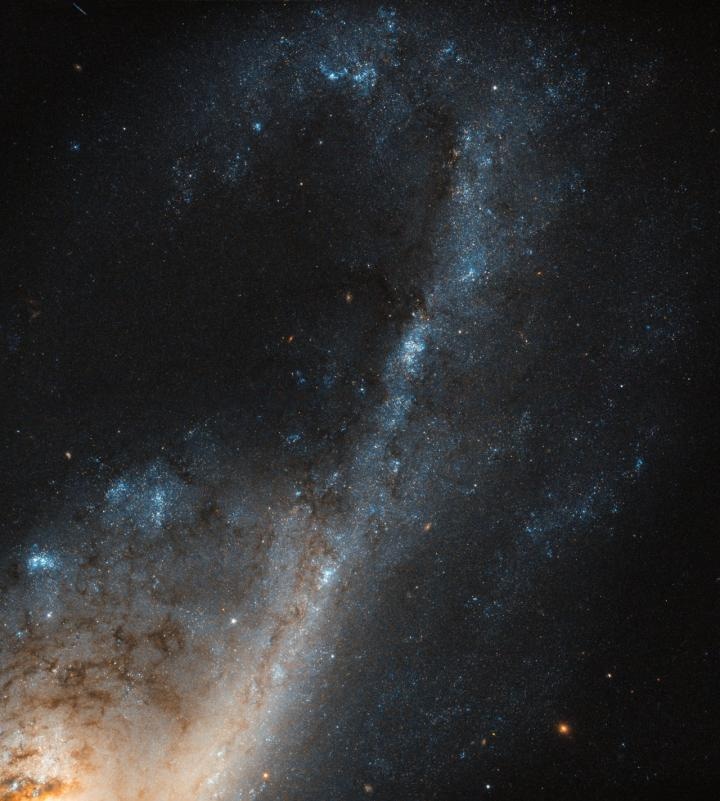Apr 17 2017
 Although galaxy formation and evolution are still far from being fully understood, the conditions we see within certain galaxies -- such as so-called starburst galaxies -- can tell us a lot about how they have evolved over time. Starburst galaxies contain a region (or many regions) where stars are forming at such a breakneck rate that the galaxy is eating up its gas supply faster than it can be replenished! Credit: ESA/Hubble & NASA
Although galaxy formation and evolution are still far from being fully understood, the conditions we see within certain galaxies -- such as so-called starburst galaxies -- can tell us a lot about how they have evolved over time. Starburst galaxies contain a region (or many regions) where stars are forming at such a breakneck rate that the galaxy is eating up its gas supply faster than it can be replenished! Credit: ESA/Hubble & NASA
The formation and evolution of galaxies are yet to be completely understood, however, the conditions observed within specific galaxies, such as starburst galaxies, can explain a lot about how the galaxies evolved over time. Starburst galaxies comprise of one region or even several regions where stars are developing at such a rapid rate that the galaxy is almost eating up its gas supply in an extremely rapid manner than it can be replenished.
One such galaxy, NGC 4536 has been efficiently captured by the Hubble’s Wide Field Camera 3 (WFC3). This galaxy is a hub of extreme star formation and is positioned almost 50 million light-years away in the constellation of Virgo (The Virgin). Several different factors are available that can lead to such an ideal environment in which stars can develop at such a rapid rate. A sufficiently massive supply of gas has significantly been observed. This could be attained through several ways, for instance, as a result of some event that pushes lots of gas into a relatively small space, or by travelling extremely close to another galaxy, in a full-blown galactic collision.
It is possible for astronomers to tell where stars have been born as star formation leaves a few tell-tale fingerprints. It is an established fact that starburst regions are rich in gas. In these extreme environments, young stars mostly live fast and die young, burning very hot and exhausting their gas supplies rather quickly. These stars also release increased amounts of intense ultraviolet light, which blasts the electrons off any atoms of hydrogen existing nearby (a process known as ionization).This results in frequently leaving behind colorful clouds of ionized hydrogen, known in astronomer-speak as HII regions.
Source: https://www.nasa.gov/